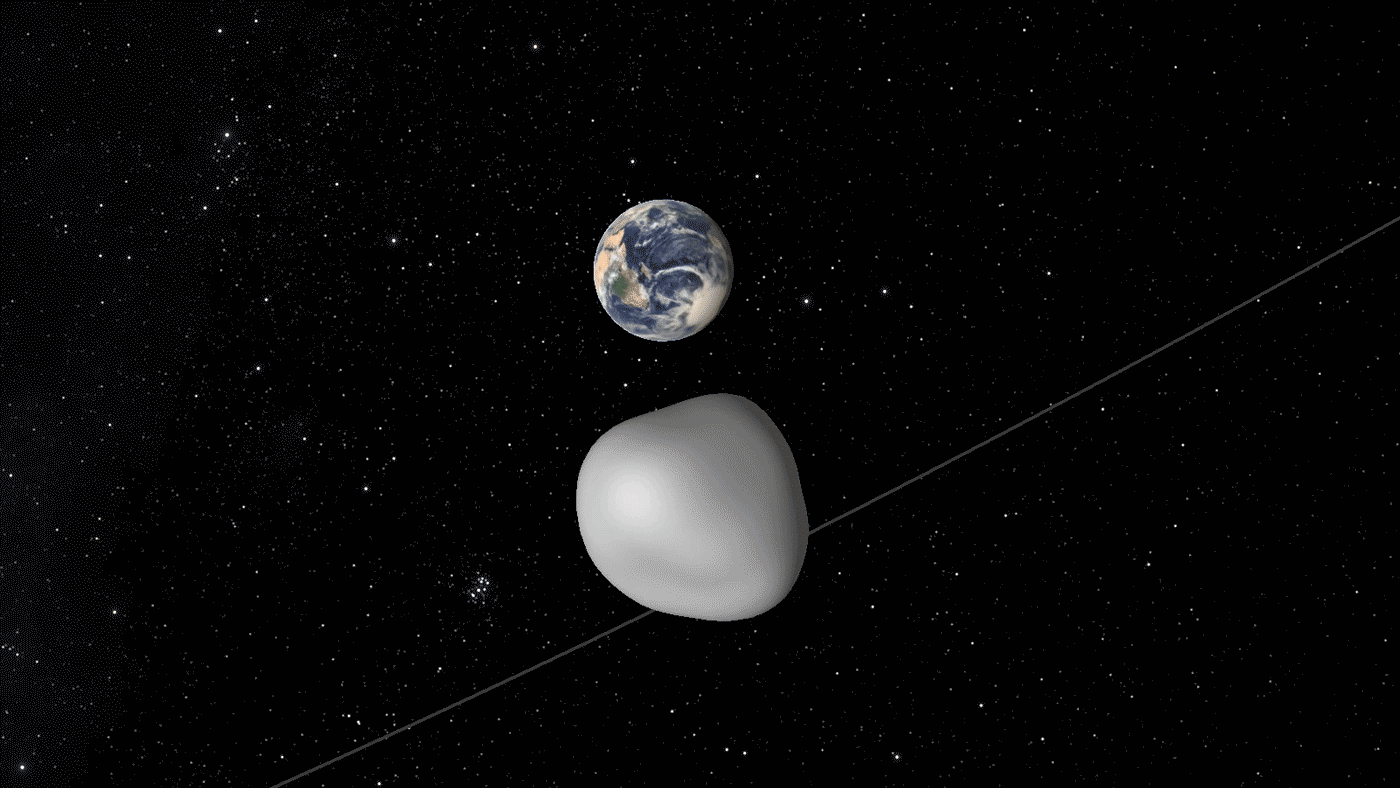Incoming Asteroid Test: NASA Using Planetary Defense System During Flyby

An asteroid is coming close to Earth later this year and NASA is going to use it as a test of how well it can avert disaster in the form of a deadly strike.
The space agency’s “network of observatories and scientists who work with planetary defense” are waiting for the small asteroid, dubbed 2012 TC4, to pass by Earth in what they expect will be a safe but close flyby, according to NASA’s Jet Propulsion Laboratory. The scientists don’t know exactly how near it will come on October 12, but it could be as close at 4,200 miles from Earth’s surface. The farthest estimate is 170,000 miles away — a much greater distance but still closer than the moon.
Although the asteroid is not going to crash into our planet, it’s going to be used in what will be similar to a drill for these groups.
Read: This Meteorite That Just Landed Is As Old As Earth Itself
NASA’s Planetary Defense Coordination Office is tasked with finding and keeping track of asteroids and comets that are close to Earth and could potentially pose a danger to the planet. They also are supposed to warn the public when one of them might crash down and help the government prepare for such an event.
“Scientists have always appreciated knowing when an asteroid will make a close approach to and safely pass the Earth because they can make preparations to collect data to characterize and learn as much as possible about it,” program scientist Michael Kelley said in the JPL statement. “This time we are adding in another layer of effort, using this asteroid flyby to test the worldwide asteroid detection and tracking network, assessing our capability to work together in response to finding a potential real asteroid threat.”
2012 TC4, which hasn’t been in telescope range since the year for which it was named, is between 30 and 100 feet across, a tiny size compared to some of the other objects that pass by Earth’s neighborhood most days. The little amount of time astronomers had to observe it — “It has been too distant and too faint to be detected over the last five years,” NASA says — is one reason they are so unsure about the object’s exact size and how close it will come to us.

JPL keeps track of these objects and updates a public database that people can search. Just as recently as July 21, an object three times the size of 2012 TC4 passed Earth from a distance that is just a third of that between here and the moon. Since the beginning of this year, 24 other objects have passed by closer than the lunar distance, although the large majority of them were even smaller than the approaching asteroid.
Leading up to and during the October flyby, scientists will attempt to capture the asteroid once again with telescopes and track the object.
“This is a team effort that involves more than a dozen observatories, universities and labs across the globe so we can collectively learn the strengths and limitations of our near-Earth object observation capabilities,” the University of Arizona’s Vishnu Reddy said in the NASA statement. “This effort will exercise the entire system, to include the initial and follow-up observations, precise orbit determination, and international communications.”
Read: Do We Have to Worry About an Asteroid Strike?
Although it is not common for significantly sized objects in space to crash down to the Earth, it does happen — and you don’t have to go all the way back to the asteroid strike believed to have killed the dinosaurs 65 million years ago. A rock a little smaller than 2012 TC4 streaked across the sky in Chelyabinsk, Russia, in 2013, causing a shockwave that blew out windows and caused other damage that injured hundreds of people. Scientists had not detected the object before it entered Earth’s atmosphere.
The upcoming asteroid flyby will not be as dramatic.
“This is the perfect target for such an exercise because while we know the orbit of 2012 TC4 well enough to be absolutely certain it will not impact Earth, we haven’t established its exact path just yet,” Paul Chodas, manager of JPL’s Center for Near Earth Object Studies, said in the statement. “It will be incumbent upon the observatories to get a fix on the asteroid as it approaches, and work together to obtain follow-up observations than make more refined asteroid orbit determinations possible.”
© Copyright IBTimes 2024. All rights reserved.











